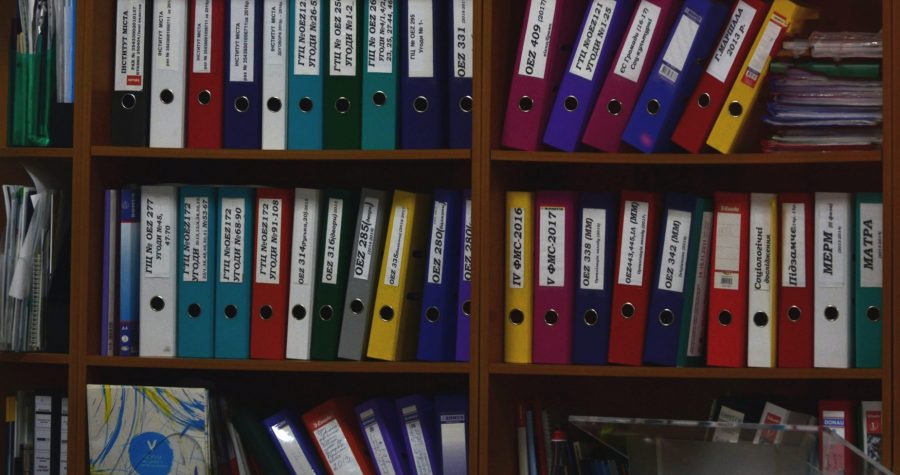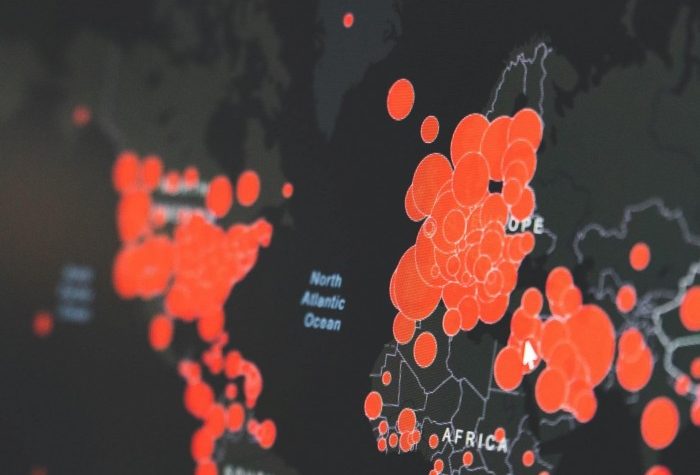Understand the payment instruments
There is no Free lunch in the corporate world, but a brutal circle of payments. A client cannot purchase “something for nothing,” and businesses are all about the circulation of payments. One owner pays for the services of his employees and the materials by vendors. The vendor makes that payment to another business entity, so on and so forth. Thus, the sweet round of economics is all paid up in a vicious ring.
Table of Contents
There are different types of payment instruments used by entrepreneurs, where some are incredibly modern ways like “cryptocurrency”. Since not all organizations are comfortable with this digital currency, we will be sharing old-school or rather classic payment instruments currently in practice. There are specific financial instruments, for example, letters of credit and bill of exchange, etc., and we will discuss those in detail.
The letter of credit
If we simply define the term, it is a document issued by a banking institution to a different bank. It is a documentary credit that is widely utilized in international trade to an exporter. The trustworthy bank provides a guarantee in order to pursue the trade business smoothly. LC assures an exporter that the buyer’s payment will be cleared on time and for the exact amount. If the seller finds out the payment is not made due to buyer’s inability, the bank will remain liable to clear the amount to the trader.

Telegraphic Transfer
TT is a medium of foreign remittance, which pays the funds via telegraphic transfers. It is basically a bank transfer in the electronic form from buyer to the seller through a bank. It is a relatively old process used by traders and has changed into an open account method in many countries. A trader in Egypt, for instance, pays his local bank and they will send a fax to their foreign branch or affiliate to clear the payments on a mentioned date. The exchange rate is quite suitable in the T/T way.
Payments against documents
Also known as Cash against Documents CAD, This payment term involves the Exporter instructing the bank to hand over the necessary documents to the importer after dues are cleared. CAD is used when the buyer completely pays the attached bank draft or bill of exchange. This method is easier for both sides of the trade and less expensive than a letter of credit. Document against payment or DAP sees clear instructions to the bank about dispatching those documents only when the importer clears the whole amount.
Clean Foreign Bill of Exchange
A foreign bill of exchange is a standard payment method in the import and export industry when there is established trust between both parties. Usually, trading business involves repetitive business with the same buyer or seller, and there is no risk involved in the transaction. If both accept the creditworthiness of each other, the Exporter prepares this document and sends it to the commercial bank in the buyer’s territory. The relevant documents are also sent with the payment. The importer will ultimately withdraw this financial instrument with ease.
Common Import / Export Documents

Start your day with Continental breakfast, Moroccan Couscous for the Lunch Hour, and finish off with a Chinese take-away for Dinner. Everyone fancies a versatile food-day. In today’s global world, people want to relish food items from all around the world. They like to share their mealtimes on Social Media, create small digital stories with the different types of gourmet from a diverse variety of countries. Food Industry has given meaning to the term GLOCAL in the real sense by exporting/importing the Local foods on a Universal scale. People want to eat their Olives from California, Mangoes from Pakistan, Pasta from Italy, Spices from India, and the list goes on. The industry that serves the international edible needs requires documentation. We have jotted down a listing for your comfort so that you can check the list when you are exporting your items or importing those.
Table of Contents
These papers are of following natures:
Lading Bill
is a paper requirement of the Government, which is a signed contract between carrier and seller. It is to emphasize the Cargo procedures, which include goods type, destination, origin, and it serves as a receipt. The shipping company compiles this document with the help of Exporter. It also comes with waybills of airways or
Commercial Invoice
is another obligation, produced by the Exporter to interpret the complete transaction from start to end. It includes essential information for each party involved in the process. These parties are banks, brokers, customs, shippers, and importer.
The Export Packing List
that allows authorities to know precisely what is in the container you are sending. It contains a piece of detailed information about which product is being exported, the quantity, the packaging… It is a mandatory document when shipping your product as it permits to customs, insurance and other partners to clearly evaluate the value of the transported goods and protects you as well when goods are missing at arrival or from any other inconvenient that might cause losing products before it gets to your client.
Certificates of Origin
, Manufacturer, and Inspections come in Food items are perishable; this credential ensures Quality and Quantity. Traders need to declare the origin as many countries have restrictions in place, and the importing authorities need to verify the source. Production certification requires a notarized paper depicting the Manufacturer’s details to make sure the product is ready for shipment.
The Health Certificate
is a document delivered by the competent authorities. It officially certifies the quality of the product. It is a crucial document, as countries do not have the same standards when it comes to quality, origin and ways the products have been manipulated. Indeed, before entering a country, the authorities need to make sure that your product is allowed in it and won’t breach the norms.
Insurance
papers are generally the insurance policy for the goods on-board. One needs to buy Insurance to prevent any significant losses or to take care of the liability. It needs to list down the specifications of the product, the extent of coverage, and proof of Insurance to satisfy buyers or the host country. The Exporter could produce this with the help of a broker, or the Insurance Company can issue the report to provide security of the goods in
Commercial Demand Note
or the Invoice is the reflection of the Sales Contract, which shows the agreement between both parties. The details contain Payment Conditions, Goods Sold, and the Trade Terms. The importer will use it for Customs’ clearance, and the document provides a legal binding for the Exporter. It is best to consult your legal advisor beforehand to work on this vital
Quotation. of Terms is the detail of delivery, payment, import, export, quality, quantity, and price of the products shipped. The seller is to cultivate a Quotation before actually starting the process, and it is roughly the first step of the trade
Letter of Credit
is a Bank’s guarantee to the Exporter to pay the decided amount and to emphasize on the satisfactory completion of essential documentation. This financial document secures both parties involved in the
If you have closed a sale/purchase successfully and are getting the documents ready for the process, the list mentioned above will sort you out. Some countries might require other documents.
How to mitigate currency risks during the COVID- 19 crisis
World economics is rapidly changing around the globe because of the on-going COVID19 crisis. Currency rates are fluctuating rapidly and creating global unrest. Many countries and experts have sat together in dismay to work out the solutions to the resultant economic crisis. Currency risks during the COVID-19 crisis are alarming.

Only recently, the world economy had seen the Oil crisis due to COVID19. The money matters were brought under questions as the next possible victim of the virus. Patients are put in quarantine, and the populous at large is observing self-quarantine and social distancing practices to avoid the spread. There are border restrictions, travel bans, hotels and restaurants are closed. This unforeseen situation has created a demand shock for currency. Every corporation knows the currency risk could hurt their sales. Still, they are somewhat secretly hoping everything will turn out for the best in the future.
The worldwide supply chain is disturbed, and the end-to-this crisis is nowhere to be seen as of now. People are concerned and threatened by the endemic. Every businessperson is worried about what is going to happen soon. Outlets are closed; people are reserved about spending and going out. This situation has created a supply disruption for bills and notes. Also, the virus is supposedly spreading through hard cash. People are getting affected when they touch a contaminated currency note. Cashiers at banks are getting infected, banks are being sealed, and it is going out of control.
One can mitigate the currency risks during the COVID19 crisis by using a hedging instrument called forward contract. This contact locks the currency rate once agreed upon by both parties. This instrument is used by organizations when currency fluctuation is evident, and the deal is created to alleviate the currency risks.
The contracts made amid COVID-19 could carry additional risks as the customer might not be able to pay on the due date. The financial institutions will charge penalties for that delay, and both parties could suffer from it. Even after considering these risks, a Forward Contract is still the best practice to carry out in the pandemic.
Another hedging instrument provided by banks and other financial institutions is the FX options, and it is more flexible in its’ nature. There is one demerit to that with many demerits. The disadvantage is having to pay an upfront fee. However the advantages come in numbers, such as flexibility is phenomenal when comparing with Forwarding Contracts. The choice of FX options is another benefit, as many institutions provide FX options for the sales and purchase of your goods.
A business could reduce the currency risk if they don’t have to lock up their capital in the dealings. There are guarantees provided by your banks and you will not need to put up with collateral. These guarantees are Forex Facility Guarantees (FXG). Apart from these documented strategies, one can learn to predict currency risks when developing budgets for your company. You could lock the currency rate internally for your financial budget, to avoid unforeseen risks involved. Keep the predictions on the lower side as it is better to prepare for the worst.
Impact of COVID-19 on the international trade of food industry
Impact of COVID-19 on The International Trade of Food Industry
Overall, trade is estimated to take a blow of 13-32% as an aftereffect of the world pandemic. Since every business was put in nosedive by the health catastrophe, it will have adverse effects on commerce.
What a year to be living in this world! Our generation or the former never observed a pandemic of this intensity. We are gliding through it and hopefully will survive it. The experts are saying International trade will face the most significant impact of modern history due to COVID-19.
Overall, trade is estimated to take a blow of 13-32% as an aftereffect of the world pandemic. Since every business was put in nosedive by the health catastrophe, it will have adverse effects on commerce. It is essential to keep in mind the fact that, Global economy be not in its best shape before the lockdowns began. People are comparing the current crisis with the worldwide financial crisis of 2008-09, and many are worried that the present situation might be even weaker.
The food industry is near destruction because many countries have banned specific food items to export because of COVID19. These restrictions deem not to be lifted until the world finds a cure for the virus. Therefore, the near future of the food industry is unstable. Russia, for instance, has proposed to forfeit grain exports. Although the officials are claiming there is no food shortage as of now, there is fuss in-the-air. If this uncertainty prevails and Governments start to panic, it could result in more export stoppages of food trade. It could cause another global crisis amid an ongoing pandemic. If countries stop food exports completely, the international food markets will be scarce.
The span of this pandemic had spread in 190 countries. A crisis of this multitude can result in abrupt manners for the traders around the globe, and no one can judge what precisely the loss is going to be. The disastrous day has already dawned on the global oil industry, what more is to come? Is international trade going to hit its rock bottom? The blow to international trade disrupts the airline industry, Freight businesses, productions in China, and other areas.
World Governments had put all countries in lockdown to avoid the spread of disease. This self-quarantine has resulted in the closure of the hotel and restaurant industry as well as food production, shipment. The related industries, like beverages and beer production businesses, have been affected. Even if restaurants open in the name of home-delivery or take-away, the burgeoning rise of social-distancing awareness has kept the customers from hanging out. Panic buying had its fair share of negative impact in the bargain. Impulsive buying disturbed the food supply chain. In some areas, sellers and vendors increased their prices far above the reach of people. These specific dangers have put the Food Industry on the step back.
“This self-quarantine has resulted in the closure of the hotel and restaurant industry as well as food production, shipment. The related industries, like beverages and beer production businesses, have been affected.”
The population of the world hinges on the International Trade and Food Industries for the supplies and day-to- day livelihood. Business people and Trade industries must support their Governments and come up with a plan to avoid the situation. They must ensure there are no shortages around the world, as no country can deal with the crisis on its own. All the nations around the world need to work together as a team.
Source : Remarks by DG Azevêdo

Share: Impact of COVID-19 on the international trade of food industry

Ali Iftikhar
Ali Iftikhar is a Blogger from Pakistan and a Sales Manager with the experience spanning over a decade.





